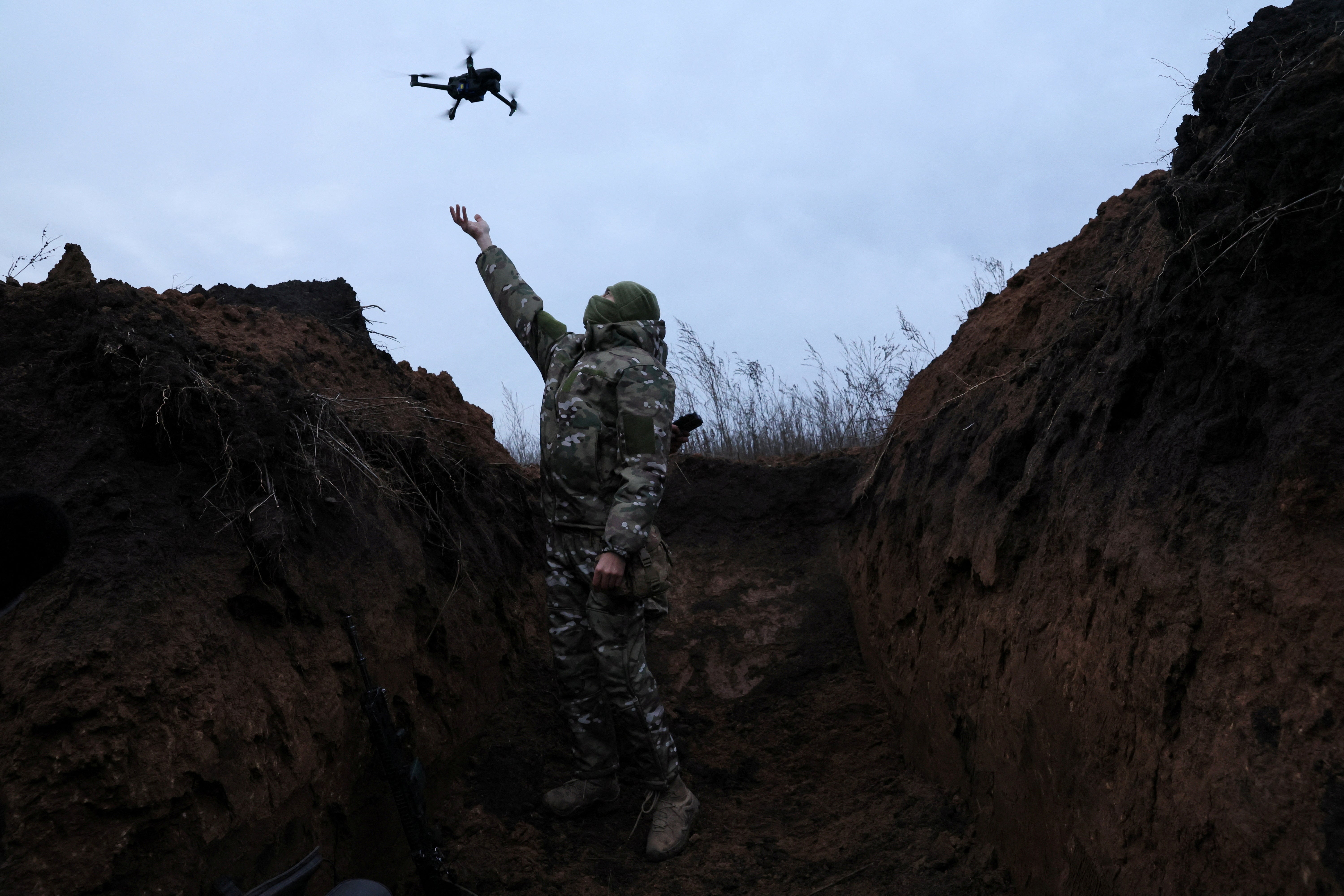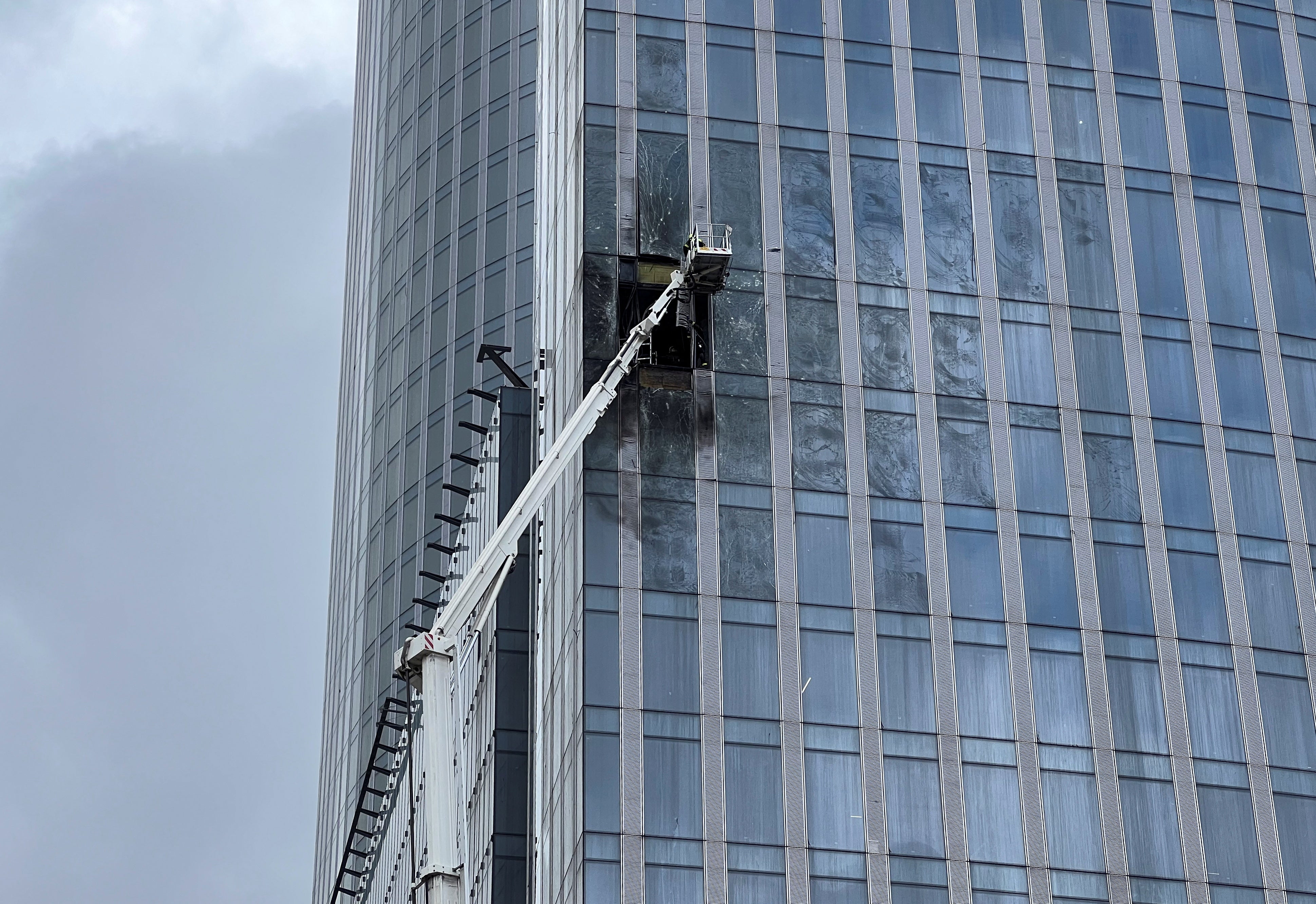Ukraine’s ‘tit for tat’ drone strikes could boost Putin’s popularity in Russia, experts warn
Ukraine’s use of long-range drones to strike Moscow isn’t a ‘smart use’ of the technology, an expert said
Your support helps us to tell the story
From reproductive rights to climate change to Big Tech, The Independent is on the ground when the story is developing. Whether it's investigating the financials of Elon Musk's pro-Trump PAC or producing our latest documentary, 'The A Word', which shines a light on the American women fighting for reproductive rights, we know how important it is to parse out the facts from the messaging.
At such a critical moment in US history, we need reporters on the ground. Your donation allows us to keep sending journalists to speak to both sides of the story.
The Independent is trusted by Americans across the entire political spectrum. And unlike many other quality news outlets, we choose not to lock Americans out of our reporting and analysis with paywalls. We believe quality journalism should be available to everyone, paid for by those who can afford it.
Your support makes all the difference.“We will end this war with drones”, former deputy prime minister of Ukraine Mykhailo Fedorov said in July.
Since that statement, Kyiv has announced plans to invest $1bn into the industry, as more than 10,000 drones are said to be lost on the battlefield every month.
But with more reports of drones cruising over Russian territory and striking deep into the heart of Moscow, analysts have warned there is a real danger Ukraine could become embroiled in a “tit-for-tat” war that could ultimately have the opposite effect and strengthen Putin’s popularity.

“There is a difference between cheaper drones used on the battlefield, and the long-range drones we are beginning to see targeting Moscow,” Kelly Grieco, research fellow at the Stimson Center think tank, told The Independent.
Ms Grieco said Ukraine had been “enormously” effective in using cheaper, commercial drones for intelligence and reconnaissance on the battlefield.
“This is the type of drone you see being lost in the thousands”, she said. The figures, which amount to 300 per day, correspond to small and fast kamikaze-style drones that can cost as little as £300 to manufacture.
“They are cheap, t hey don’t last very long, but they are easy to replace,” Ms Grieco said. “Ukraine has been very smart at using them for gaining intelligence.”
One model, the Chinese-made DJI Mavic, can be bought for as little as £100 on the internet. Although the sale of DJIs was suspended in Ukraine and Russia when the conflict began, they can still be bought abroad.
Marcel Plichta, former analyst at the US Department of Defense, told The Independent smaller “quadcopter” drones like the DJI are easily equipped with a camera and grenade to deliver a payload, making them ideal for use on the battlefield.
But Ms Grieco warned of the increasing use of more expensive long-range weapons like the “Alibaba drone” which can cost around £7,500, to strike at targets further away, including the Russian capital.

Since the beginning of this year, there have been 190 suspected long-range drone attacks inside Russia and Russian-occupied Crimea, according to BBC News.
On 23 August, a suspected Ukrainian drone hit a high-rise building in Moscow. Footage showed it had ripped off part of the skyscraper’s facade, which housed several ministries including Russia’s ministry of digital development, communications and mass media.
Soon after, Ukrainian presidential adviser Mykhailo Podolyak suggested Moscow’s residents, who have been largely untouched by the war, were experiencing revenge.

“Moscow is rapidly getting used to full-fledged war, which, in turn, will soon finally move to the territory of the ‘authors of the war’ to collect all their debts,” he said.
But Ms Grieco urged caution. “This is not a smart use of long-range strike capability by Ukraine,” she said. “It’s clearly an attempt to inflict psychological damage but I don’t think it would work effectively.
“Hoping to break domestic political support for Russia’s war effort in this way is risky. It tends to rally popular support around a government and outrage towards an external enemy.”
On 30 August, suspected Ukrainian strikes hit six regions across Russia, marking the most widespread drone attack in the conflict so far and ,ore are expected.
Although Ukraine hasn’t claimed responsibility, president Volodymyr Zelensky has previously said attacks on Russian territory are “inevitable, natural and an absolutely fair process” but again, the experts fear this will not have the desired result long-term.
“There’s a real danger of ending up in a tit-for-tat with Ukraine using drone strikes on Moscow,” Ms Grieco said. “It would be really hard to break a pattern like this.”



Join our commenting forum
Join thought-provoking conversations, follow other Independent readers and see their replies
Comments